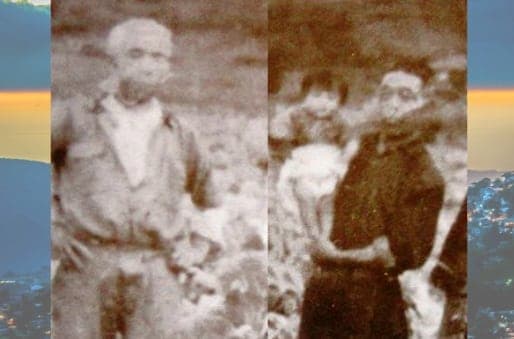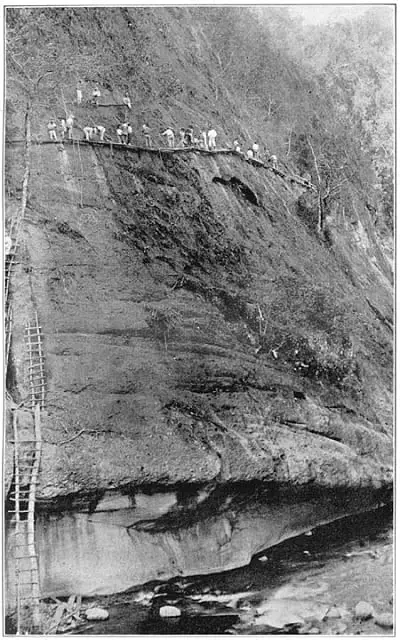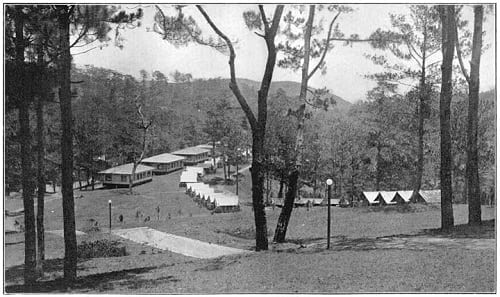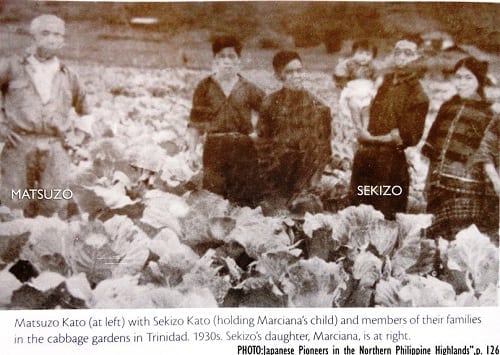The Tragic Tale of These Japanese Brothers Will Change How You Picture WWII

When the American colonial government began to build Baguio, among the laborers to come to the highland town were Japanese migrant workers—carpenters, masons, construction workers, traders —who arrived here beginning in 1905.
The initial work was the building of the Benguet Road (now Kennon Road) to connect Baguio with the Manila Railroad, a project which employed over a thousand Japanese men, who joined their Filipino, Chinese and American counterparts.
Soon, a Japanese community began to thrive with the influx of more Japanese, mostly from Fukuoka, Hiroshima, Kagoshima, Wakayama, and Yamaguchi.
Also Read: From Mountain Boy to Governor: The Incredible Story of Pitapit

They not only carved out mountains to build roads, but they also operated sawmills, landscaped gardens, erected residences, tilled agricultural lands, opened various retail businesses and established a Japanese school, which contributed greatly to Baguio’s economic boom.
Many of these Japanese intermarried with local women from all parts of the northern highlands. Such was the case of two brothers from Kanagawa, who came to Baguio in search of a brighter future: Sekizo and Matsuzo Kato.
The younger Sekizo (b. 20 Dec. 1886) was first to arrive at work on the Kennon Road project. Coming from a large family of 12, the teenager left Japan because he felt he did not stand to inherit the land. Sekizo stayed with fellow Japanese in a sawmill in Camp 7, then found employment in Itogon.
READ: Halsema Highway: Philippines’ Deadliest Road
Sekizo met an Ibaloy woman, Saria Badiong, who fled her family after coercing her into marrying a former Atok slave. The two fell in love and got married in 1910.
The couple lived in Tadiangan, and while Sekizo worked on the La Union-Baguio railway project, Saria peddled vegetables and fruits to American residents. Sekizo also worked in the construction of the Teachers’ Camp and the Baguio City Hall. They then settled in their farm in La Trinidad, together with their 6 daughters and 3 sons.

In the late 1910s, Sekizo returned to Japan, where he convinced his older brother, Matsuzo (b. 1878), to join him in his new-found country. Together, they arrived in Baguio, where Matsuzo easily found carpentry jobs which took him to Itogon and Datacan. There, he built houses for prominent native families like the Caranteses, Fianzas, Nadnarens, and Espiritus.
The Nadnarens introduced Matsuzo to his future wife, Samajan, from Kapangan. They would have two sons and a daughter.
In the ensuing years, the brothers found farmlands for rent in Kilometer 4, Trinidad, where a sizable community of Japanese farmers had settled. They moved there in the 1920s until they finally bought land in Kilometer 6.
Related Article: The Fascinating History of Baguio’s Iconic Lion
The brothers and their families lived in houses that were close to each other and spent many years growing cabbages, eggplants, and other vegetables. They supplemented their agricultural income with carpentry and construction work.
Their peaceful and contented years ended with the coming of World War II, which resulted in the detention of all Baguio Japanese by the American military in 1941. When the Japanese forces arrived to occupy Baguio, the detained Japanese were released and went back to their homes and resumed business, but from that moment on, the loyalties of all persons of Japanese descent would come under suspicion.
Some Japanese in Baguio welcomed their invader-compatriots, but many young men with Japanese surnames enlisted and fought side by side with the Filipino-American allied forces.
Others joined underground guerrilla movements. Their families were often harassed with investigations and torture. It is regrettable that these same sons and their families would be rounded up as prisoners of war after Baguio’s liberation, to be charged with collusion and tried before the People’s Court. All full-blooded Japanese war survivors were repatriated to Japan in 1945.
READ: 10 Facts About World War II That Never Made It To Your Philippine History Books
As the Allied forces stormed Baguio to liberate it from the enemy, the Kato brothers were hidden by their Filipino relatives and close friends in various places in La Trinidad. It was the least they could do to the two Japanese who had worked and lived among them for over 30 years.
Uncertain of their fate, Sekizo and Matsuzo holed themselves up in a cave in Tomay. On May 3, 1945, the desperate brothers made good their fraternal pact and took their own lives.
About the Author: Alex R. Castro is a retired advertising executive and is now a consultant and museum curator of the Center for Kapampangan Studies of Holy Angel University, Angeles City. He is the author of 2 local history books: “Scenes from a Bordertown & Other Views” and “Aro, Katimyas Da! A Memory Album of Titled Kapampangan Beauties 1908-2012”, a National Book Award finalist. He is a 2014 Most Outstanding Kapampangan Awardee in the field of Arts. For comments on this article, contact him at [email protected]
Reference
Afable, P. (2003). Japanese Pioneers in the Northern Philippine Highlands: A Centennial Tribute 1903-2003 (pp. 126-127). Baguio City, Philippines: Filipino-Japanese Foundation of Northern Luzon, Inc.
Written by FilipiKnow
FilipiKnow
FilipiKnow strives to ensure each article published on this website is as accurate and reliable as possible. We invite you, our reader, to take part in our mission to provide free, high-quality information for every Juan. If you think this article needs improvement, or if you have suggestions on how we can better achieve our goals, let us know by sending a message to admin at filipiknow dot net
Copyright Notice
All materials contained on this site are protected by the Republic of the Philippines copyright law and may not be reproduced, distributed, transmitted, displayed, published, or broadcast without the prior written permission of filipiknow.net or in the case of third party materials, the owner of that content. You may not alter or remove any trademark, copyright, or other notice from copies of the content. Be warned that we have already reported and helped terminate several websites and YouTube channels for blatantly stealing our content. If you wish to use filipiknow.net content for commercial purposes, such as for content syndication, etc., please contact us at legal(at)filipiknow(dot)net

